Mid-Autumn Gifts Beyond Mooncakes: A Touch of Fire and Fragrance
Product ValueExplore a unique Mid-Autumn gift from Miniwood: a handcrafted wooden lighter paired with palo santo — bringing warmth, scent, and a moment of calm.
Chess is not only a game of strategy but also a stage where each piece plays a role and shows its unique personality. Let's explore the personalities of each chess piece, from the majestic king to the humble pawns, to better understand the sophistication and depth of the game of chess..
Sitting on the throne of power, the King is the soul of the army, the heart of the chessboard. Not possessing attack power or the ability to move flexibly like other chess pieces, the King possesses noble qualities that determine the fate of the entire game.
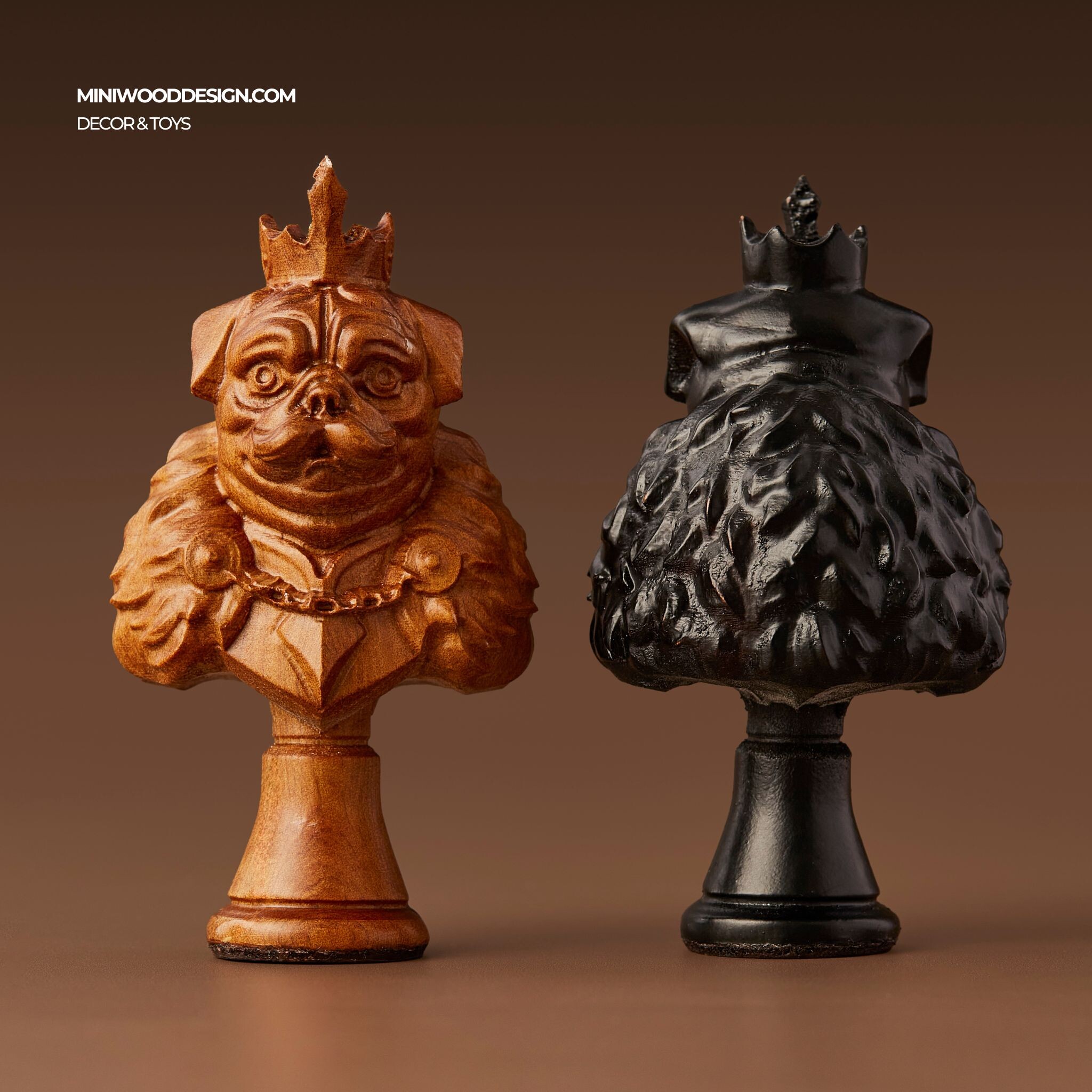 The king in the "Dog Dynasty" chess set by Miniwood Design
The king in the "Dog Dynasty" chess set by Miniwood Design
The first and most important characteristic of the King is caution. The king must always be vigilant, because his safety is the key to victory. Each move of the King is carefully considered, avoiding any risks that could lead to being checked, putting the army in danger.
Besides being cautious, the King also showed extraordinary resilience. As the main target of the enemy, the King must face countless dangers and challenges. In the face of overwhelming attacks, the King did not flinch, always maintained his spirit, and looked for opportunities to turn the situation around.
Furthermore, the King also possesses the qualities of a talented leader. Every piece on the chessboard points to the King, obeying his orders and protecting him. The king is the one who decides on tactics, coordinates the army and makes strategic moves, leading the army to victory.
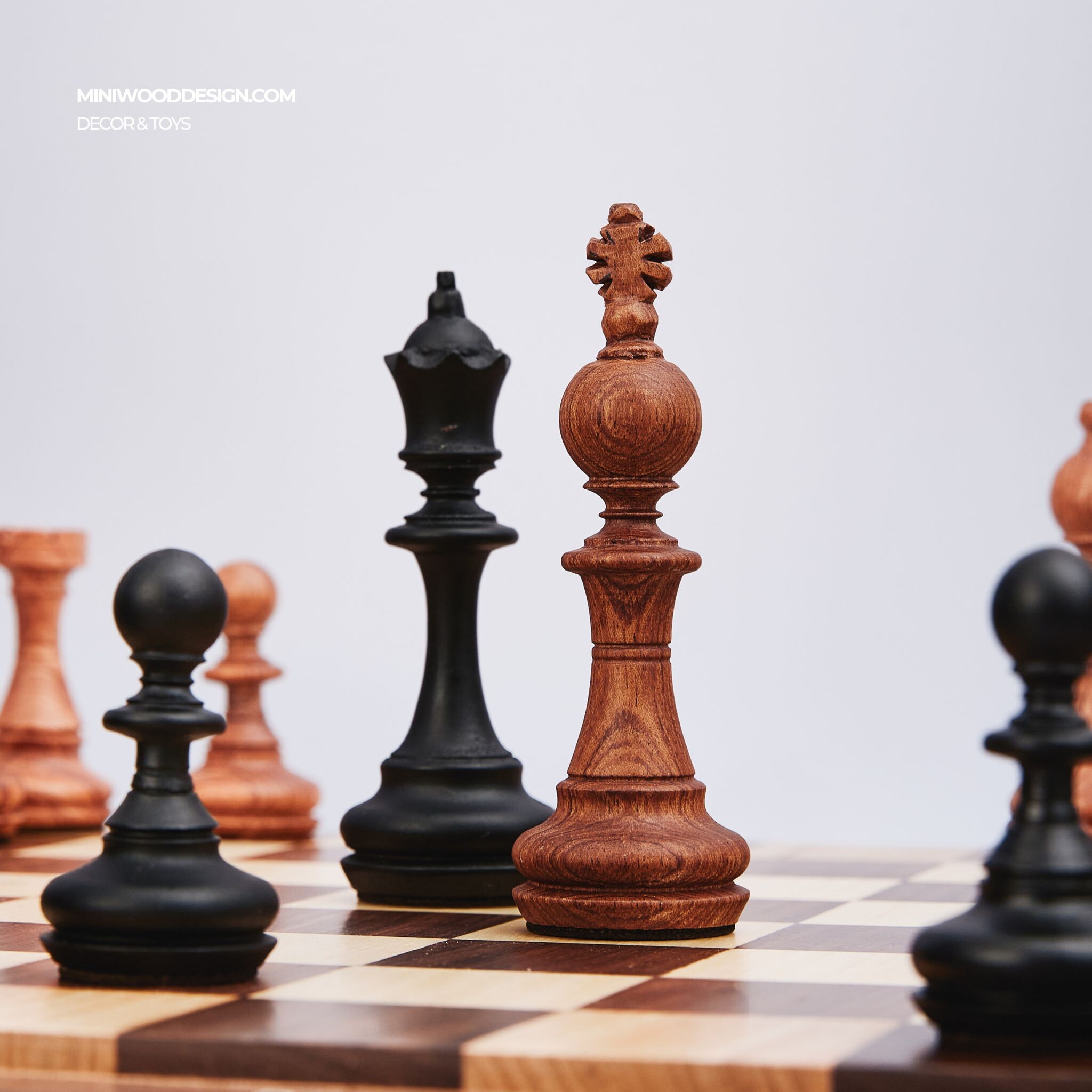 King pieces with classic design in Miniwood's Signature wooden chess set
King pieces with classic design in Miniwood's Signature wooden chess set
However, the King also has certain weaknesses. Limited mobility leaves the King vulnerable and dependent on the protection of other pieces. Therefore, chess players need to always promote the safety of the King, using reasonable strategies to protect him from dangerous attacks.
When talking about chess, it is impossible not to mention the Queen - the most powerful piece on the chessboard, possessing more attack power and flexible movement than any other piece. This powerful queen plays an important role in deciding the battle and leading the army to victory.
Queen's first and most outstanding personality is strength. Unlike other chess pieces that can only move in a certain direction, the Queen can move freely horizontally, vertically and diagonally, with a wide range of motion throughout the entire chessboard. Thanks to that, the Queen can attack any of the opponent's pieces, creating enormous pressure on the opponent's squad.
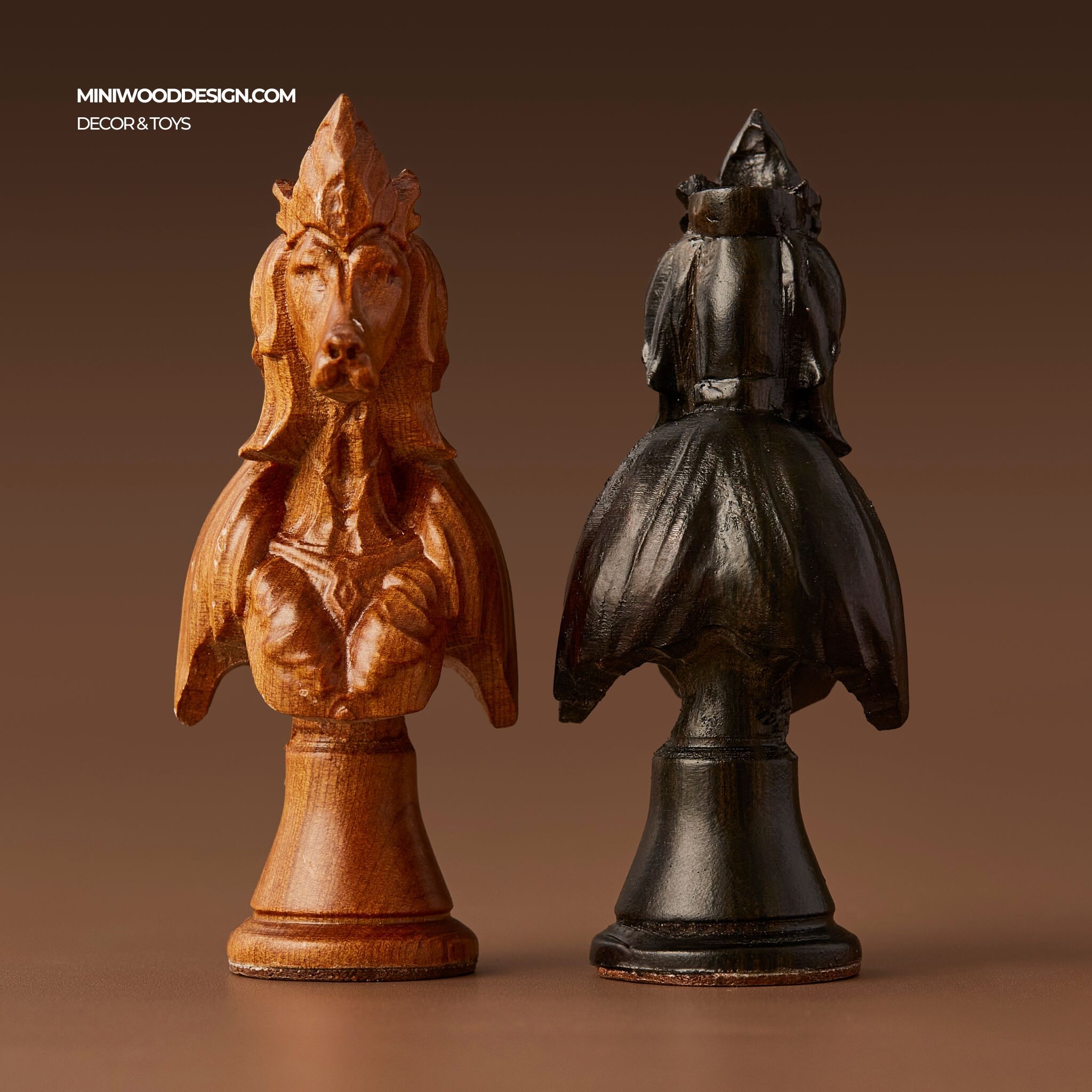 The queen is designed after the Saluki dog breed in the chess set "Dog Dynasty"
The queen is designed after the Saluki dog breed in the chess set "Dog Dynasty"
Besides being strong, queen also shows versatility and flexibility. Diverse movement abilities help Hau easily adapt to all situations on the board, effectively participating in both attack and defense. The Queen can support other pieces in attacking, creating sharp coordinated attacks. At the same time, the Queen can also defend effectively, protect important pieces and block dangerous attacks from the opponent.
Furthermore, Queen also possesses the qualities of a fierce warrior. Like a queen going to battle, Hau is always ready to rush into battle, directly participating in the most fierce attacks. Hau is not afraid to confront the enemy's strong pieces, always fighting bravely to protect his army and win.
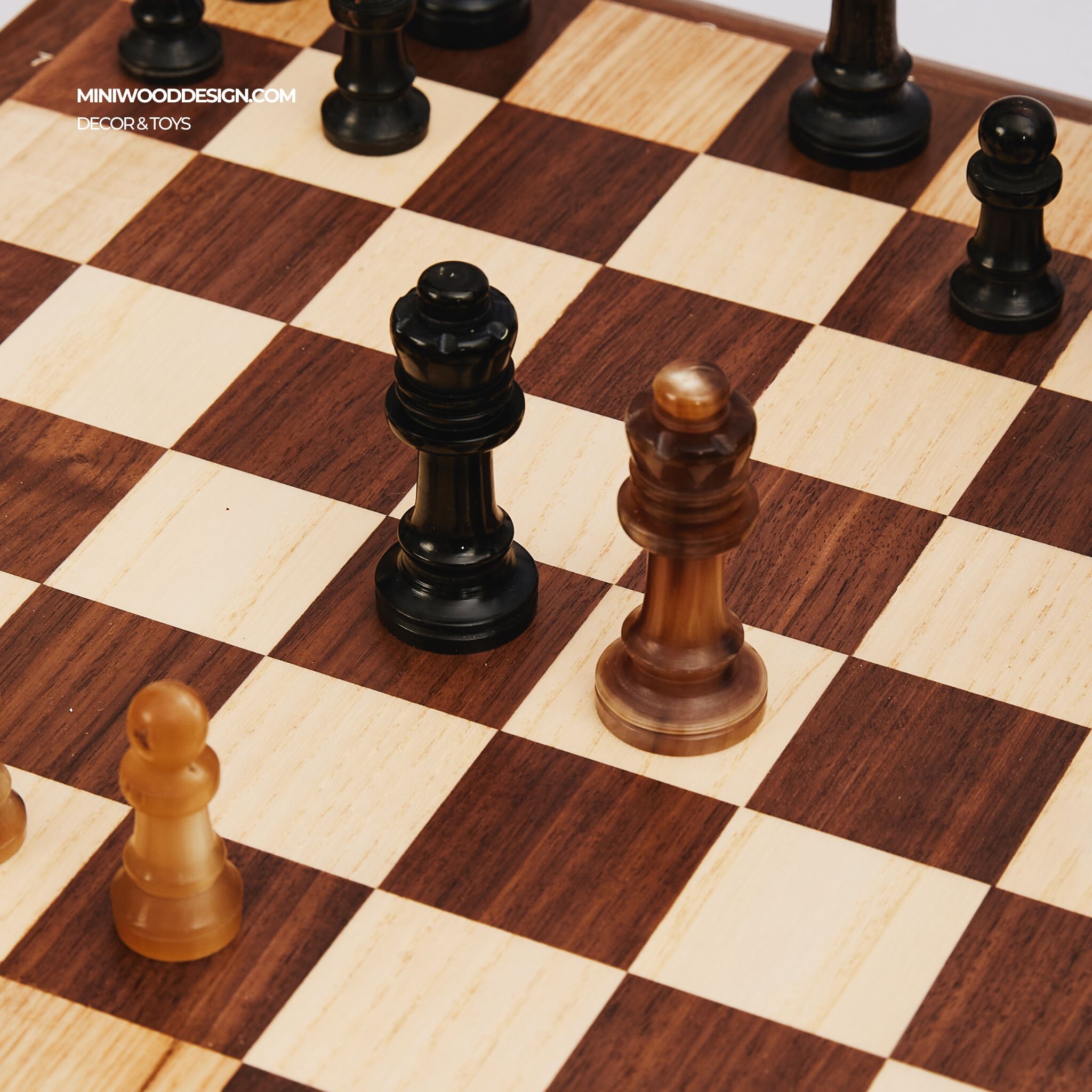 The Queen is made of horn material
The Queen is made of horn material
However, Queen also has a certain weakness. Due to possessing great strength, Queen often becomes the main target of the opponent's attack. Therefore, chess players need to always promote the Queen's safety, using reasonable strategies to protect the Queen from dangerous attacks.
On the chess board, where strategy and intelligence are intertwined, Rooks appear as powerful war chariots, standing tall and proud in the midst of battle. Unlike other chess pieces, the Rook possesses long-range attack power and the ability to move flexibly, becoming an effective arm for the King in his journey to conquer victory.
Reliability is the Rook's most outstanding quality. With the ability to move far and attack accurately, Rook always successfully completes the task of protecting other pieces and creating dangerous attacks. The Rook is a solid "steel shield", protecting the King and Queen from potential dangers.
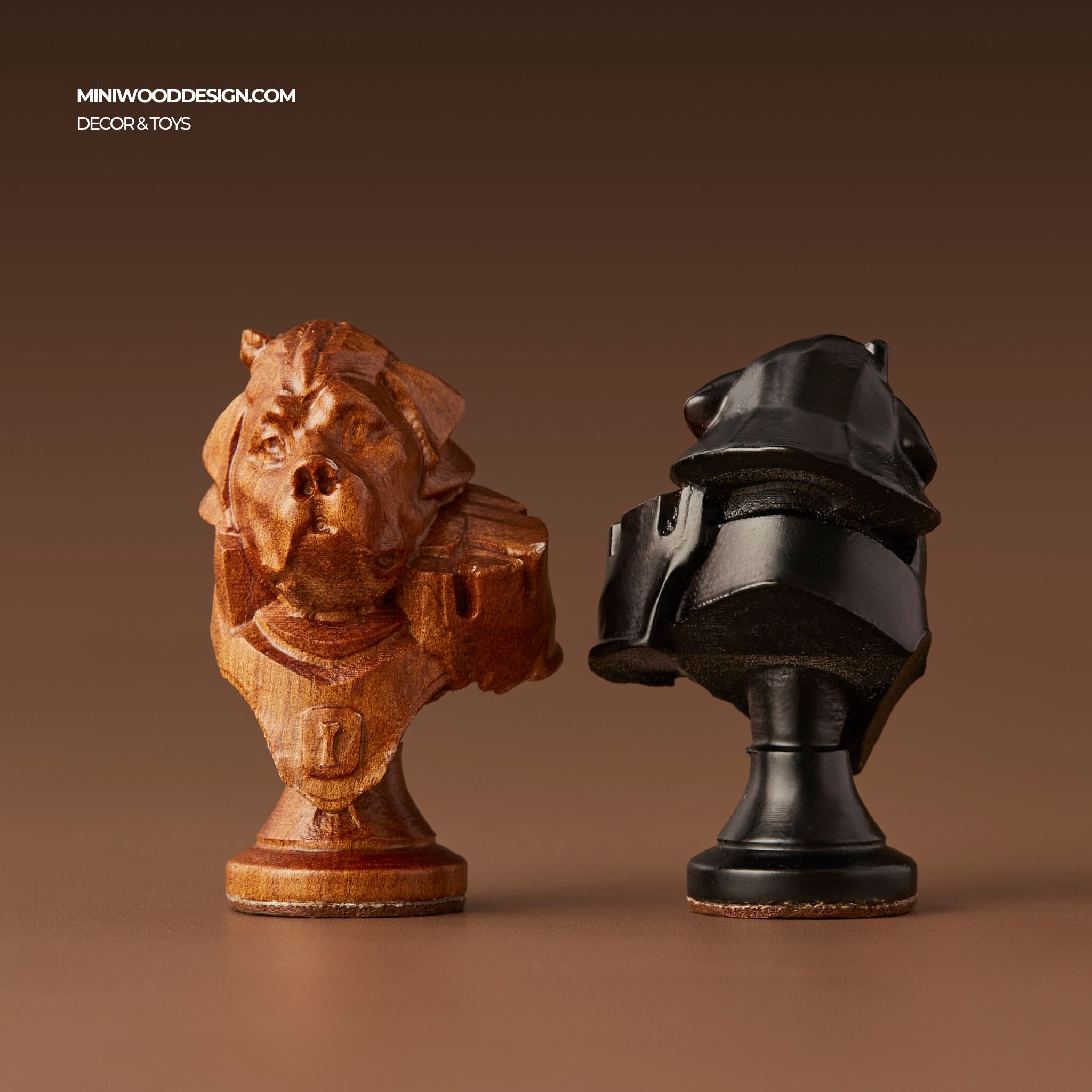 The rooks are designed after the Rottweiler dog breed in the "Dog Dynasty" chess set.
The rooks are designed after the Rottweiler dog breed in the "Dog Dynasty" chess set.
However, the Rook is not limited to just a defensive role. The attacking power of the Rook is also extremely formidable. The ability to move in a straight line helps the Rook troops penetrate all obstacles and directly attack the enemy squad. The Rook is not afraid to confront strong pieces, always fighting bravely to protect the army and win.
However, the Rook also has certain weaknesses. Limited horizontal and vertical movement makes the Rook vulnerable to ranged attacks. Therefore, chess players need to use the Rook properly, in combination with other chess pieces to protect the Rook and maximize its power.
 Rook with resin material and wooden base
Rook with resin material and wooden base
Knight, the mighty knight, moves horizontally and vertically with unique jumps. Completely different from other chess pieces, the Knight moves in an L shape, two forward and one horizontal, creating surprising and unpredictable paths.
The Knight's strength lies in his ability to jump over the heads of other pieces, regardless of enemy or friend. Thanks to that, Knight can wriggle through the enemy's formation, suddenly attack vulnerable positions, or create menacing attacks. Right from the first moves, Ma was able to attack the King, creating pressure and making his opponent wary.
 The Knight is designed after the Golden retriever dog breed in the "Dog Dynasty" chess set.
The Knight is designed after the Golden retriever dog breed in the "Dog Dynasty" chess set.
As a highly mobile piece, the Knight plays an important role in controlling the center of the board. Jumping over important squares, the Knight helps us control key positions, creates a springboard for other troops to attack and limits the opponent's movement.
However, the knight also has some weaknesses:
Despite these limitations, the Knight is still an extremely powerful and flexible piece on the chess board. Using the Knight effectively requires players to have sharp strategic thinking, careful calculation ability and creativity in gameplay.
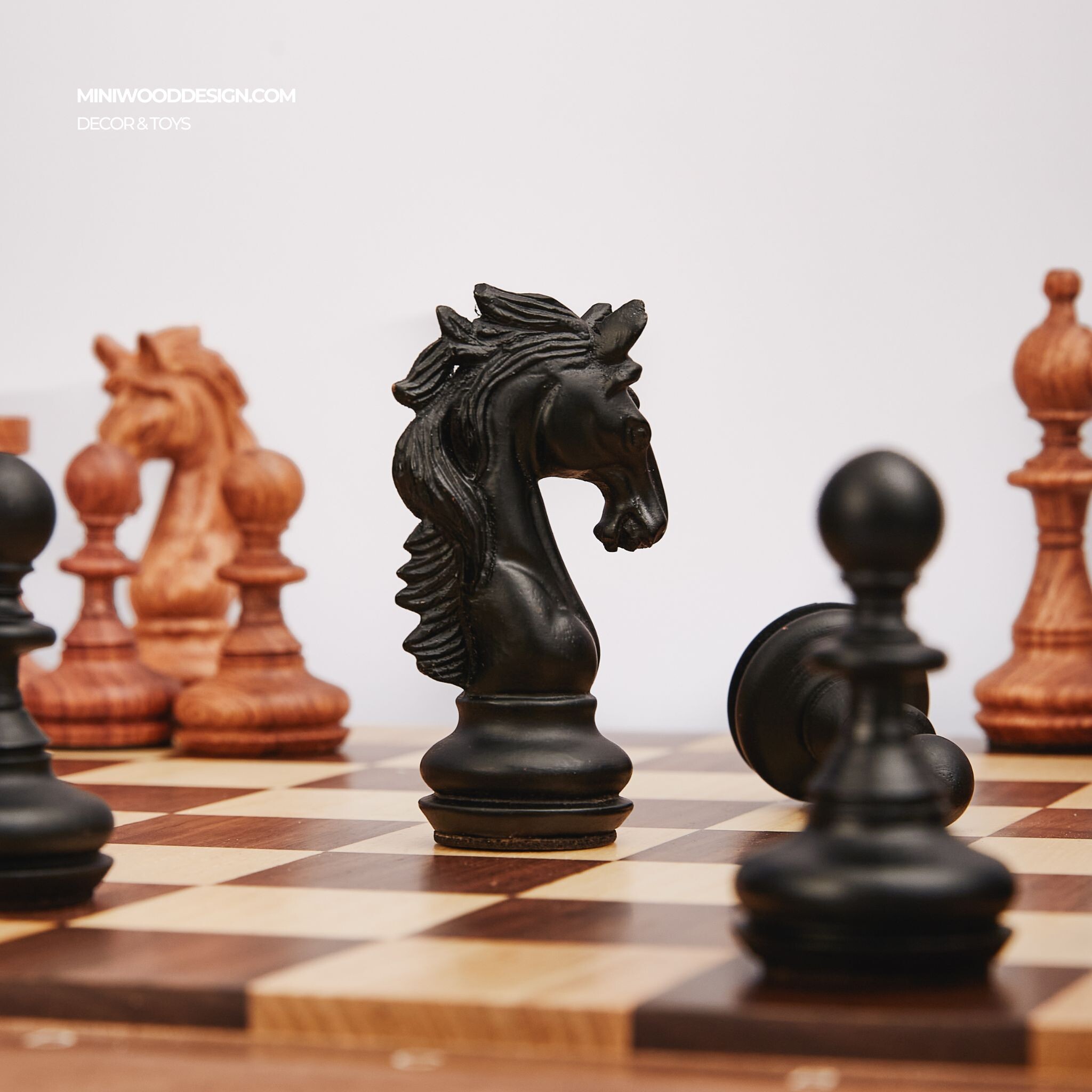 The knight is also a testament to the meticulousness in chess piece design
The knight is also a testament to the meticulousness in chess piece design
Hidden behind central positions, the Bishop - the silent warrior - silently creates great strength for the game. Unlike the Horse with its bold jumps, the Statue moves quickly and flexibly along diagonal lines, bringing powerful destructive power on all fronts.
As a long-range piece, the Bishop can easily support teammates in any position, creating beautiful combination attacks. The Bishop's hidden power lies in its ability to control multiple squares at the same time, blocking important enemy routes and putting pressure on the King.
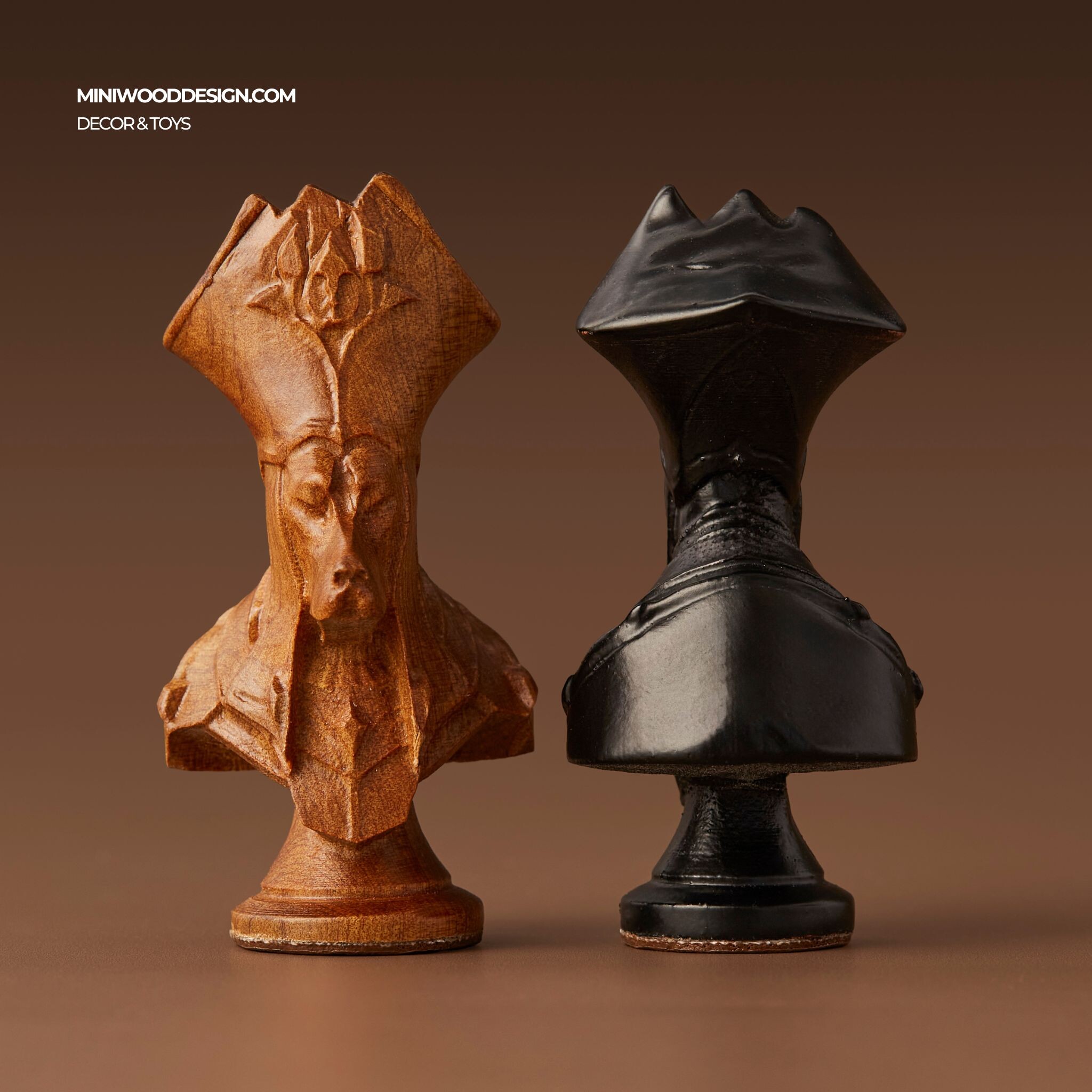 The bishop is designed after the Doberman dog breed in the "Dog Dynasty" chess set.
The bishop is designed after the Doberman dog breed in the "Dog Dynasty" chess set.
In particular, in the endgame, when the number of remaining pieces is small, the Bishop can develop its strength even more. The ability to move far helps the Bishop easily capture the pawn and create a position for the Queen, contributing to the player's victory.
However, the Bishop also has some weaknesses:
Using the Bishop effectively requires the player to have a clear strategy and the ability to coordinate well with other pieces. Always observe the position of the Bishop, create conditions for the Bishop to move freely and take full advantage of the potential power of this piece.
Looking at the chess board, we can easily see the pawns - tiny warriors lined up right in front of the king. Although small and seemingly weak, pawns possess unique personalities and play an extremely important role in the game of chess.
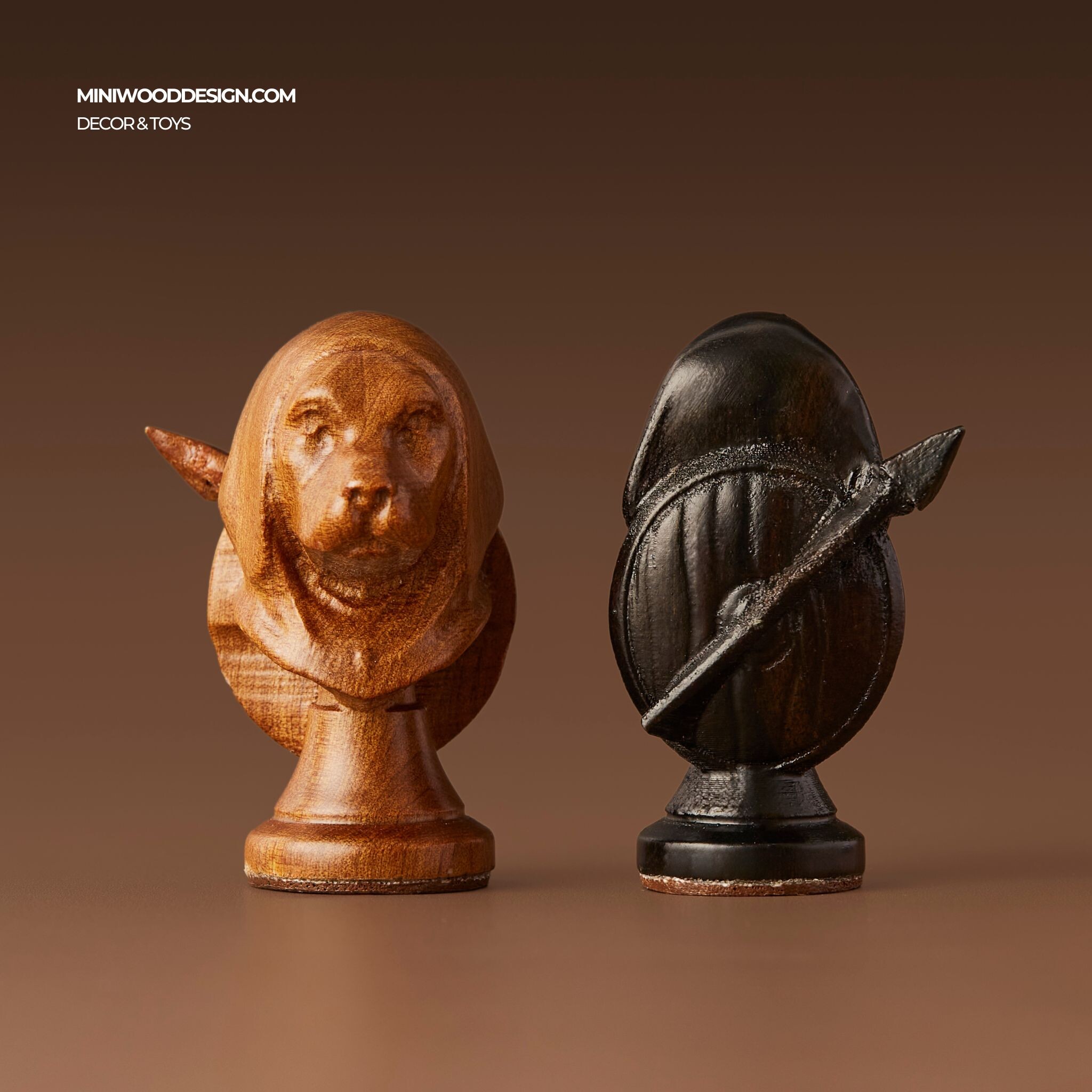 The pawns are designed after the Beagle dog breed in the "Dog Dynasty" chess set.
The pawns are designed after the Beagle dog breed in the "Dog Dynasty" chess set.
The most outstanding characteristic of the pawn is their determination to move forward. Unlike other chess pieces that can move backwards and sideways, pawns can only move forward, despite all dangers. This courageous spirit helps the pawns attack on the front lines, opening the way for stronger troops to attack and protect the King directly.
During the journey, the pawns always face many dangers. It can be captured by the enemy, even having to sacrifice itself to save the King or pave the way for the Queen to advance. This noble sacrifice of the Pawn demonstrates team spirit and solidarity, contributing to the overall victory for the whole team.
Although it is the weakest piece, the pawn possesses infinite development potential. When reaching the opponent's last row, pawns can be promoted to queens, rooks, knights, and bishops, becoming the most powerful pieces on the chessboard. This ability to transform symbolizes effort and perseverance, showing that anyone can achieve success if they have clear will and goals.
Using pawns effectively requires players to have smart tactics and careful calculations. Arrange the pawn formation properly, create conditions for the pawns to move safely and make the most of the promotion ability to bring victory.
Understanding the personality of each chess piece not only helps players develop better strategies, but also creates a deeper love and respect for the game of chess. These characteristics make each game lively and exciting, like a battle full of strategy and personality.
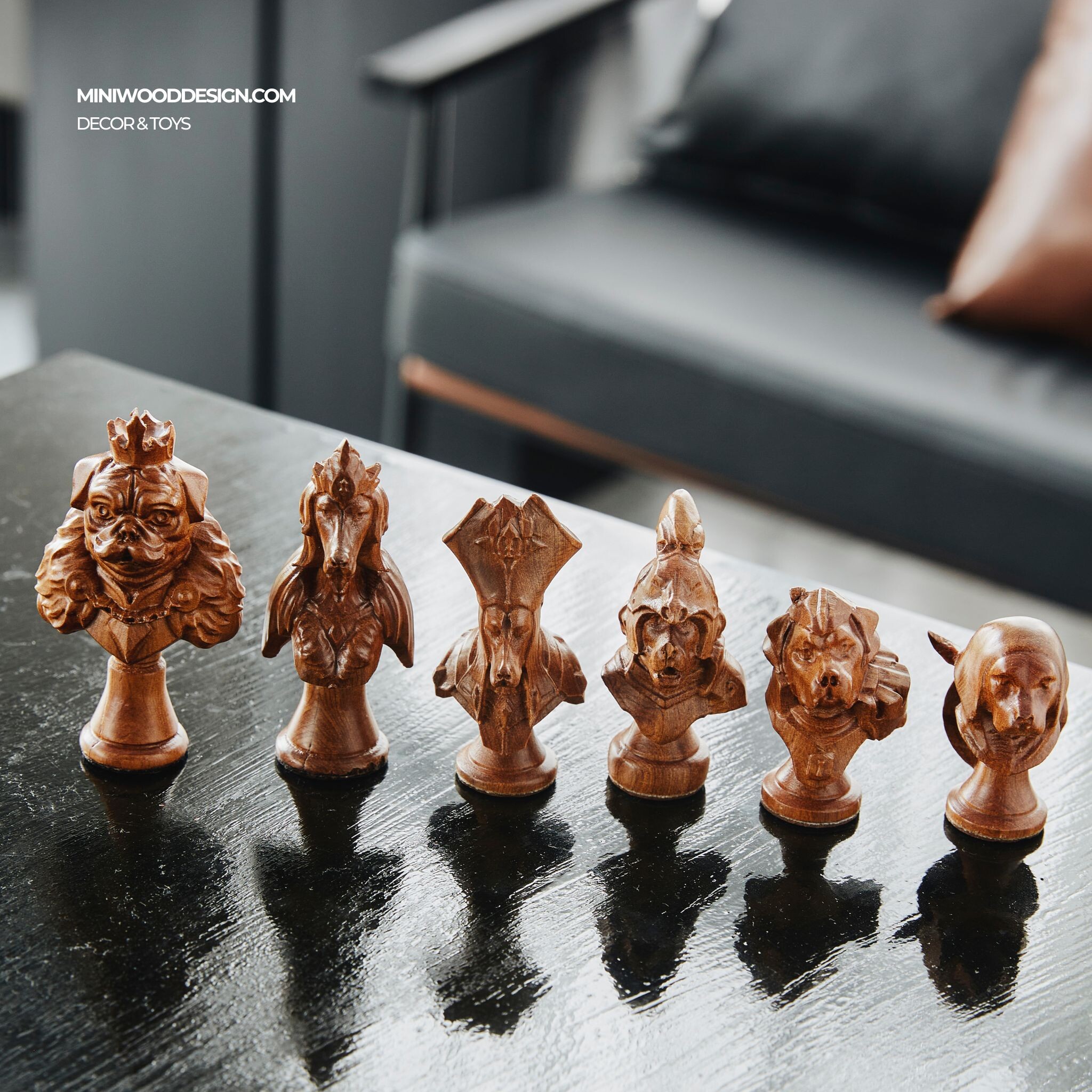
>>> SEE AND ENJOY MINIWOOD'S HIGH QUALITY WOODEN CHESS SETS HERE!
Related Posts
Explore a unique Mid-Autumn gift from Miniwood: a handcrafted wooden lighter paired with palo santo — bringing warmth, scent, and a moment of calm.
As Christmas approaches, the festive atmosphere fills the air. Are you ready to embrace a warm and meaningful Christmas with your family and loved ones? Miniwood introduces two unique products that promise to bring a special Christmas atmosphere to your home: the wooden chess set and the woodpecker door knocker.
Mid-Autumn Festival is coming, what have you prepared to send to your important business partners? Instead of mass gifts, why don't you try to experience unique wooden gift products from Miniwood Design? With sophisticated lines, high-quality natural wood materials, each product has its own story, showing the sophistication and class of the giver.